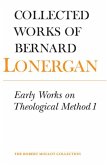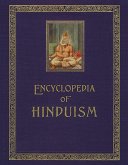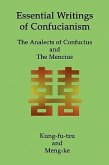- Broschiertes Buch
- Merkliste
- Auf die Merkliste
- Bewerten Bewerten
- Teilen
- Produkt teilen
- Produkterinnerung
- Produkterinnerung
The best of Hegel's early writings, with an introduction on Hegel's philosophical development.
Andere Kunden interessierten sich auch für
![Early Works on Theological Method 1 Early Works on Theological Method 1]() Bernard LonerganEarly Works on Theological Method 159,99 €
Bernard LonerganEarly Works on Theological Method 159,99 €![Abraham Joshua Heschel: Essential Writings (Modern Spiritual Masters) Abraham Joshua Heschel: Essential Writings (Modern Spiritual Masters)]() Susannah HeschelAbraham Joshua Heschel: Essential Writings (Modern Spiritual Masters)18,99 €
Susannah HeschelAbraham Joshua Heschel: Essential Writings (Modern Spiritual Masters)18,99 €![Guide to the Study of Ancient Magic Guide to the Study of Ancient Magic]() Guide to the Study of Ancient Magic133,99 €
Guide to the Study of Ancient Magic133,99 €![Passion for Creation Passion for Creation]() Matthew FoxPassion for Creation24,99 €
Matthew FoxPassion for Creation24,99 €![Seeking Goodness and Beauty Seeking Goodness and Beauty]() Seeking Goodness and Beauty47,99 €
Seeking Goodness and Beauty47,99 €![Encyclopedia of Hinduism Encyclopedia of Hinduism]() India Heritage Research Foundation (IhrfEncyclopedia of Hinduism949,99 €
India Heritage Research Foundation (IhrfEncyclopedia of Hinduism949,99 €![Essential Writings of Confucianism: The Analects of Confucius and The Mencius Essential Writings of Confucianism: The Analects of Confucius and The Mencius]() Kung Fu-TzuEssential Writings of Confucianism: The Analects of Confucius and The Mencius14,99 €
Kung Fu-TzuEssential Writings of Confucianism: The Analects of Confucius and The Mencius14,99 €-
-
-
The best of Hegel's early writings, with an introduction on Hegel's philosophical development.
Hinweis: Dieser Artikel kann nur an eine deutsche Lieferadresse ausgeliefert werden.
Hinweis: Dieser Artikel kann nur an eine deutsche Lieferadresse ausgeliefert werden.
Produktdetails
- Produktdetails
- Verlag: University of Pennsylvania Press
- Seitenzahl: 352
- Erscheinungstermin: 29. Oktober 1971
- Englisch
- Abmessung: 203mm x 137mm x 24mm
- Gewicht: 390g
- ISBN-13: 9780812210224
- ISBN-10: 0812210220
- Artikelnr.: 21502526
- Herstellerkennzeichnung
- Libri GmbH
- Europaallee 1
- 36244 Bad Hersfeld
- gpsr@libri.de
- Verlag: University of Pennsylvania Press
- Seitenzahl: 352
- Erscheinungstermin: 29. Oktober 1971
- Englisch
- Abmessung: 203mm x 137mm x 24mm
- Gewicht: 390g
- ISBN-13: 9780812210224
- ISBN-10: 0812210220
- Artikelnr.: 21502526
- Herstellerkennzeichnung
- Libri GmbH
- Europaallee 1
- 36244 Bad Hersfeld
- gpsr@libri.de
G. W. F. Hegel. Translated by T. M. Knox and Richard Kroner. Introduction by Richard Kroner
Introduction: Hegel's Philosophical Development. By Richard Kroner
I. THE POSITIVITY OF THE CHRISTIAN RELIGION. Translated by T. M. Knox
Part I. How Christianity Became the Positive Religion of a Church
1. Preface
2. Position of the Jewish Religion
3. Jesus
4. Whence Came the Positive Element in Christianity?
5. The Conception of a Sect
6. The Teaching of Jesus
7. Jesus Has Much To Say about His Own Individual Personality
8. Jesus Speaks of Himself as the Messiah
9. Miracles
10. The Positive Element Derived from the Disciples
11. The Disciples Contrasted with the Pupils of Socrates
12. The Number of Disciples Fixed at Twelve
13. The Disciples Sent Forth on Their Mission
14. The Resurrection and the Commands Given Thereafter
15. How the Teaching of Jesus Came To Be Interpreted in a Positive Sense
16. What Is Applicable in a Small Society Is Unjust in a State
17. Common Ownership of Goods
18. Equality
19. The Lord's Supper
20. Expansionism
21. How a Moral or Religious Society Grows into a State
22. Conflict between Church and State: (a) In Matters Affecting Civil
Rights Generally
23. (b) In Matters Affecting Property
24. (c) In Matters Affecting Education
25. Two Incidental Remarks about Church and State Relations
26. The Ecclesiastical Contract: Representation and the Power of the
Citizens in Matters of Doctrine
27. Contract with the State
28. Defense of the Faith
29. The Form Morality Must Acquire in a Church
30. The Rise of Sects Inevitable
Part II. Materials for a Continuation of Part I
1. "Is Judaea, Then, the Teutons' Fatherland?"
2. How Christianity Conquered Paganism
3. How a Disinclination for Military Service Helped the Success of
Christianity
4. Miracles
Part III. Revised Form of Sections 1-4 of Part I
1. Preface
2. Judaism
3. Jesus
II. THE SPIRIT OF CHRISTIANITY AND ITS FATE. Translated by T. M. Knox
i. The Spirit of Judaism
ii. The Moral Teaching of Jesus: ([alpha]) The Sermon on the Mount
Contrasted with the Mosaic Law and with Kant's Ethics
iii. The Moral Teaching of Jesus: ([beta]) Love as the Transcendence of
Penal Justice and the Reconciliation of Fate
iv. The Religious Teaching of Jesus
v. The Fate of Jesus and His Church
III. LOVE. Tranlsated by T. M. Knox
IV. FRAGMENT OF A SYSTEM. Translated by Richard Kroner
Appendix. On Classical Studies. Translated by Richard Kroner
Bibliographical Note. By Richard Kroner
Index
I. THE POSITIVITY OF THE CHRISTIAN RELIGION. Translated by T. M. Knox
Part I. How Christianity Became the Positive Religion of a Church
1. Preface
2. Position of the Jewish Religion
3. Jesus
4. Whence Came the Positive Element in Christianity?
5. The Conception of a Sect
6. The Teaching of Jesus
7. Jesus Has Much To Say about His Own Individual Personality
8. Jesus Speaks of Himself as the Messiah
9. Miracles
10. The Positive Element Derived from the Disciples
11. The Disciples Contrasted with the Pupils of Socrates
12. The Number of Disciples Fixed at Twelve
13. The Disciples Sent Forth on Their Mission
14. The Resurrection and the Commands Given Thereafter
15. How the Teaching of Jesus Came To Be Interpreted in a Positive Sense
16. What Is Applicable in a Small Society Is Unjust in a State
17. Common Ownership of Goods
18. Equality
19. The Lord's Supper
20. Expansionism
21. How a Moral or Religious Society Grows into a State
22. Conflict between Church and State: (a) In Matters Affecting Civil
Rights Generally
23. (b) In Matters Affecting Property
24. (c) In Matters Affecting Education
25. Two Incidental Remarks about Church and State Relations
26. The Ecclesiastical Contract: Representation and the Power of the
Citizens in Matters of Doctrine
27. Contract with the State
28. Defense of the Faith
29. The Form Morality Must Acquire in a Church
30. The Rise of Sects Inevitable
Part II. Materials for a Continuation of Part I
1. "Is Judaea, Then, the Teutons' Fatherland?"
2. How Christianity Conquered Paganism
3. How a Disinclination for Military Service Helped the Success of
Christianity
4. Miracles
Part III. Revised Form of Sections 1-4 of Part I
1. Preface
2. Judaism
3. Jesus
II. THE SPIRIT OF CHRISTIANITY AND ITS FATE. Translated by T. M. Knox
i. The Spirit of Judaism
ii. The Moral Teaching of Jesus: ([alpha]) The Sermon on the Mount
Contrasted with the Mosaic Law and with Kant's Ethics
iii. The Moral Teaching of Jesus: ([beta]) Love as the Transcendence of
Penal Justice and the Reconciliation of Fate
iv. The Religious Teaching of Jesus
v. The Fate of Jesus and His Church
III. LOVE. Tranlsated by T. M. Knox
IV. FRAGMENT OF A SYSTEM. Translated by Richard Kroner
Appendix. On Classical Studies. Translated by Richard Kroner
Bibliographical Note. By Richard Kroner
Index
Introduction: Hegel's Philosophical Development. By Richard Kroner
I. THE POSITIVITY OF THE CHRISTIAN RELIGION. Translated by T. M. Knox
Part I. How Christianity Became the Positive Religion of a Church
1. Preface
2. Position of the Jewish Religion
3. Jesus
4. Whence Came the Positive Element in Christianity?
5. The Conception of a Sect
6. The Teaching of Jesus
7. Jesus Has Much To Say about His Own Individual Personality
8. Jesus Speaks of Himself as the Messiah
9. Miracles
10. The Positive Element Derived from the Disciples
11. The Disciples Contrasted with the Pupils of Socrates
12. The Number of Disciples Fixed at Twelve
13. The Disciples Sent Forth on Their Mission
14. The Resurrection and the Commands Given Thereafter
15. How the Teaching of Jesus Came To Be Interpreted in a Positive Sense
16. What Is Applicable in a Small Society Is Unjust in a State
17. Common Ownership of Goods
18. Equality
19. The Lord's Supper
20. Expansionism
21. How a Moral or Religious Society Grows into a State
22. Conflict between Church and State: (a) In Matters Affecting Civil
Rights Generally
23. (b) In Matters Affecting Property
24. (c) In Matters Affecting Education
25. Two Incidental Remarks about Church and State Relations
26. The Ecclesiastical Contract: Representation and the Power of the
Citizens in Matters of Doctrine
27. Contract with the State
28. Defense of the Faith
29. The Form Morality Must Acquire in a Church
30. The Rise of Sects Inevitable
Part II. Materials for a Continuation of Part I
1. "Is Judaea, Then, the Teutons' Fatherland?"
2. How Christianity Conquered Paganism
3. How a Disinclination for Military Service Helped the Success of
Christianity
4. Miracles
Part III. Revised Form of Sections 1-4 of Part I
1. Preface
2. Judaism
3. Jesus
II. THE SPIRIT OF CHRISTIANITY AND ITS FATE. Translated by T. M. Knox
i. The Spirit of Judaism
ii. The Moral Teaching of Jesus: ([alpha]) The Sermon on the Mount
Contrasted with the Mosaic Law and with Kant's Ethics
iii. The Moral Teaching of Jesus: ([beta]) Love as the Transcendence of
Penal Justice and the Reconciliation of Fate
iv. The Religious Teaching of Jesus
v. The Fate of Jesus and His Church
III. LOVE. Tranlsated by T. M. Knox
IV. FRAGMENT OF A SYSTEM. Translated by Richard Kroner
Appendix. On Classical Studies. Translated by Richard Kroner
Bibliographical Note. By Richard Kroner
Index
I. THE POSITIVITY OF THE CHRISTIAN RELIGION. Translated by T. M. Knox
Part I. How Christianity Became the Positive Religion of a Church
1. Preface
2. Position of the Jewish Religion
3. Jesus
4. Whence Came the Positive Element in Christianity?
5. The Conception of a Sect
6. The Teaching of Jesus
7. Jesus Has Much To Say about His Own Individual Personality
8. Jesus Speaks of Himself as the Messiah
9. Miracles
10. The Positive Element Derived from the Disciples
11. The Disciples Contrasted with the Pupils of Socrates
12. The Number of Disciples Fixed at Twelve
13. The Disciples Sent Forth on Their Mission
14. The Resurrection and the Commands Given Thereafter
15. How the Teaching of Jesus Came To Be Interpreted in a Positive Sense
16. What Is Applicable in a Small Society Is Unjust in a State
17. Common Ownership of Goods
18. Equality
19. The Lord's Supper
20. Expansionism
21. How a Moral or Religious Society Grows into a State
22. Conflict between Church and State: (a) In Matters Affecting Civil
Rights Generally
23. (b) In Matters Affecting Property
24. (c) In Matters Affecting Education
25. Two Incidental Remarks about Church and State Relations
26. The Ecclesiastical Contract: Representation and the Power of the
Citizens in Matters of Doctrine
27. Contract with the State
28. Defense of the Faith
29. The Form Morality Must Acquire in a Church
30. The Rise of Sects Inevitable
Part II. Materials for a Continuation of Part I
1. "Is Judaea, Then, the Teutons' Fatherland?"
2. How Christianity Conquered Paganism
3. How a Disinclination for Military Service Helped the Success of
Christianity
4. Miracles
Part III. Revised Form of Sections 1-4 of Part I
1. Preface
2. Judaism
3. Jesus
II. THE SPIRIT OF CHRISTIANITY AND ITS FATE. Translated by T. M. Knox
i. The Spirit of Judaism
ii. The Moral Teaching of Jesus: ([alpha]) The Sermon on the Mount
Contrasted with the Mosaic Law and with Kant's Ethics
iii. The Moral Teaching of Jesus: ([beta]) Love as the Transcendence of
Penal Justice and the Reconciliation of Fate
iv. The Religious Teaching of Jesus
v. The Fate of Jesus and His Church
III. LOVE. Tranlsated by T. M. Knox
IV. FRAGMENT OF A SYSTEM. Translated by Richard Kroner
Appendix. On Classical Studies. Translated by Richard Kroner
Bibliographical Note. By Richard Kroner
Index








